[ad_1]
Steve Jobs is widely quoted to have said, “A lot of times, people don’t know what they want until you show it to them.” A quantum computing (QC) service is hard enough to understand when it’s explained to you plainly. The promise of QC relies upon its ability to leverage something weird to accomplish something fantastic. Thing is, we’re not quite at “fantastic” yet, and by the time we get there, things may no longer be so weird.
Here’s the general idea: The first quantum computing (QC) services, or quantum-like services, being offered to commercial customers are experiments. They are ways to stage scientific functions, in an effort to learn where a quantum-oriented market might be. That’s important because QC researchers need to be able to tap into this market as early as possible (assuming it exists) if they are to generate the capital investments necessary to actually grow such a market in the first place.
To give you a better sense of where this market stands at the moment, we’ve selected five organizations — some commercial, some academic, and some which blend the two — which offer some kind of a quantum computing service that incorporates real QCs performing true quantum functions. The expectation is that customers will be able to subscribe to quantum services much the same way they do to cloud services today, whether that’s a first or at some eventual point in time. The thing with quantum is, time ends up more often than not being a variable.
Also: Quantum as a service: How to productize a hole in space and time
Why we chose these five
As we are not quantum researchers, and as the present state of the market is perhaps just one stage beyond embryonic, we’re frankly not in a position to make recommendations based on overall, long-term quality of service. What we do know about, from experience, is the development of technology and software markets — particularly how certain players position themselves to be, or to eventually become, influential.
So we chose five QaaS services that show signs of being influential and becoming the models for others as this market develops. These are services that, based partly upon who provides them but also upon the cleverness of their value propositions, we believe will shape the course of this emerging industry. . . assuming, of course, it continues to emerge.
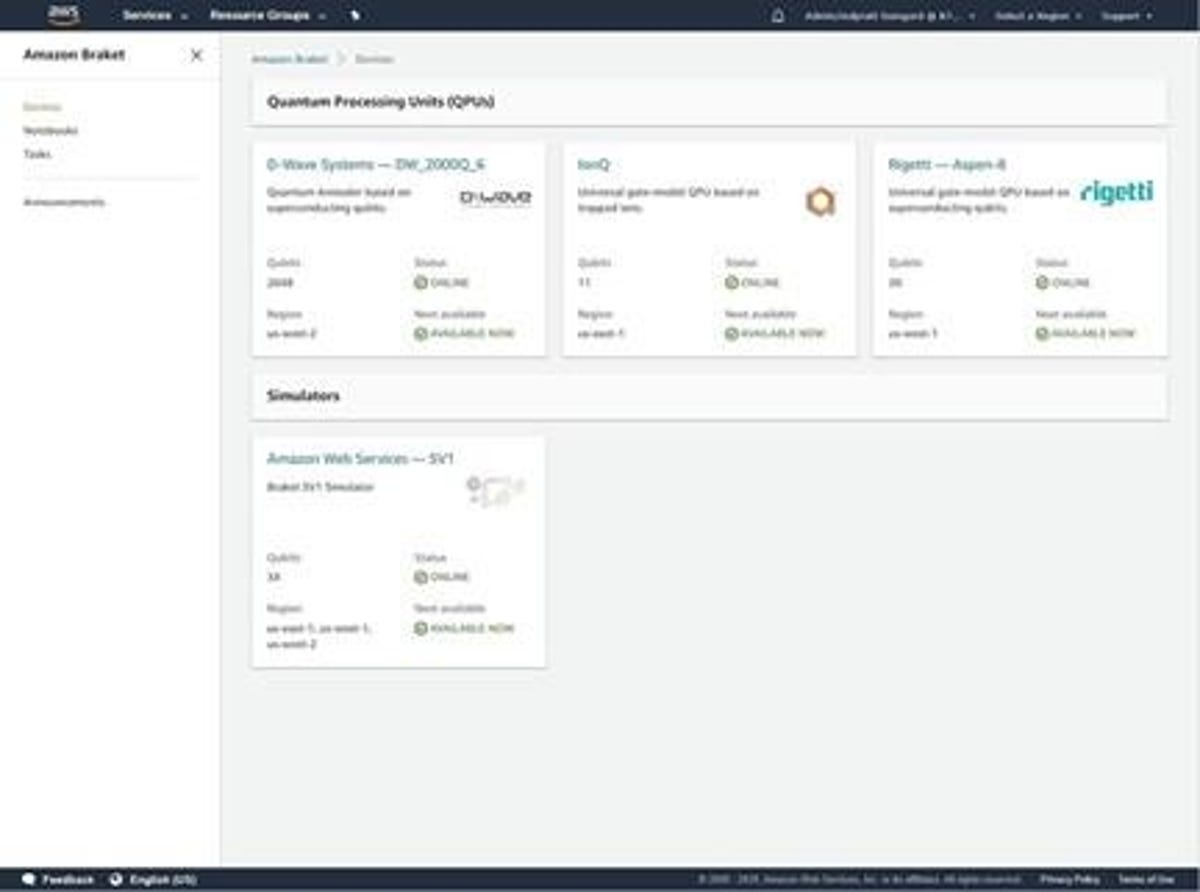
Braket seems the most fitting prototype for the type of quantum computing service that could become commonplace, should QC essentially work the way we predict it should at present. It presumes its customer is a developer, and that this customer’s objective is to use development tools to devise a quantum circuit, which is a simulated device whose schematics follow the principles of quantum physics as we understand them.
At a very deep level, all computer programs may be decompiled into a fundamental form called a Boolean circuit, whose logic may be depicted on a flowchart. A quantum circuit has a graphic form as well, and as with classical, binary computers, there are languages and symbologies that make it easier for a developer to express the logic of such a circuit. For instance, there’s the so-called “Bra – Ket” notation that uses characters such as |v> and <v| to represent vectorization and linearization, respectively, when mapping the state of one quantum system to another, created by quantum physics pioneer Paul Dirac in 1934 [PDF], and for which AWS’ system is named.
Suppose the broader application you’re writing calls upon you to take a very complex audio waveform, and decompose it into a series of constituent, simpler waves that can be described in terms of frequency and amplitude. A classical Fourier transform algorithm can accomplish this, only with recursion — it needs several iterations before arriving at a result. With a properly constructed quantum circuit, such a transform can be accomplished with just one pass.
Braket starts by giving you the tools you’d need to build the quantum circuit linguistically, and then test that circuit (“printing” it) against AWS’ online quantum simulator — an application running on the Amazon cloud, which garners $0.075 or $0.275 per active minute (first hour free), depending on service grade — or the local simulator, which is an application you can run locally on your PC. Such a simulator doesn’t quite provide a full solution, though it may reveal enough data to tell you whether the circuit is error-free. Note you don’t have to spin up your own AWS virtual machine; the staging area provides just the resources you need to “print” the circuit.
After that point, AWS serves as a kind of broker for a handful of other providers’ real (not simulated) quantum computers. Through an online marketplace that should look familiar enough to regular AWS users, Bracket facilitates transactions that let you stage your tested circuit on one of these real QCs. You settle the price with your choice of QPU provider, at a base price of $0.30 per task, plus a surplus fee per “shot” (a very generalized way of symbolizing a program cycle). Using an open source software development kit (SDK) called Qiskit, you can then make your quantum circuit accessible by a classical application.
BRAKET AT A GLANCE
Intended market: Academics, experimenters, scientific programmers
Class of service: Quantum circuit design, testing, and staging
Affordability: Affordable for tasks designed only to be run for a handful of minutes; not intended to be run for long durations as part of a public application
View Now at Amazon
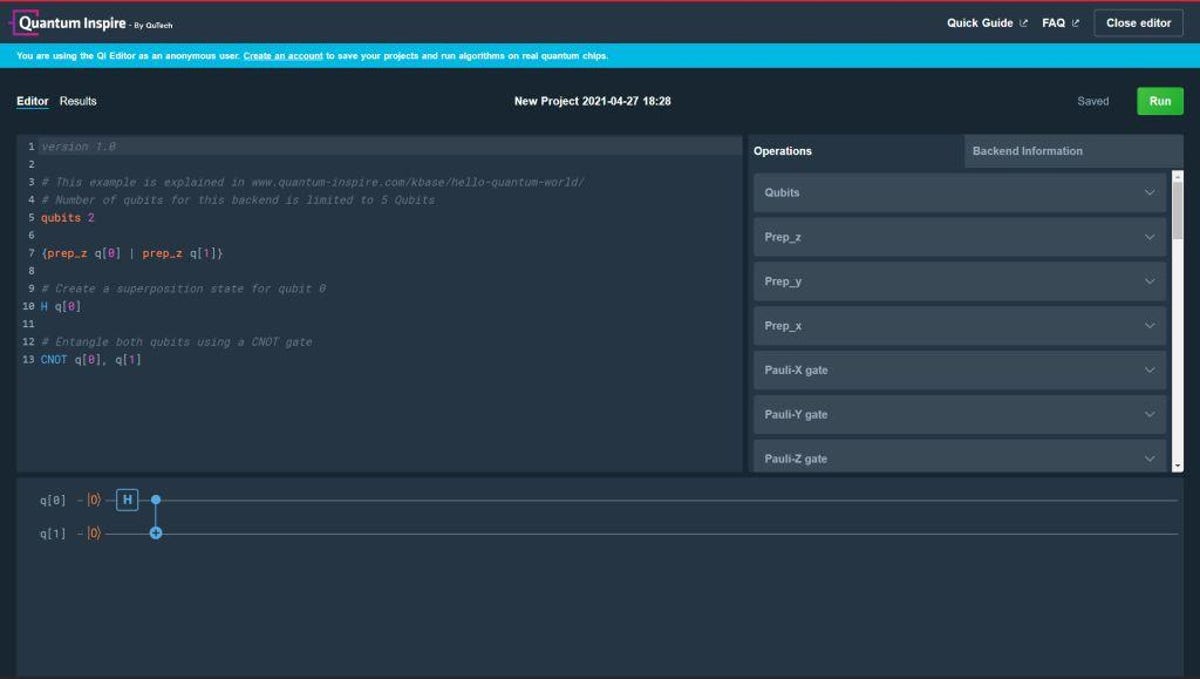
Quantum Inspire is an ongoing project by the Netherlands’ Delft University of Technology (TU Delft), collaborating with the Dutch research organization TNO, to prototype a network of QC systems that can be put to use for commercial and academic purposes. In a March 2020 white paper introducing the platform [PDF], TU Delft’s researchers explained that the intention of their system is to model not just the QC, but the entire computing economy that will make QaaS available and useful at some point:
Quantum Inspire comprises of a number of layers including quantum hardware, classical control electronics, and a software front-end with a cloud-accessible web-interface. Such a system is called a full-stack. Full-stack systems are essential test beds for understanding this novel computational paradigm. They can act as technology accelerators because only through careful analysis of the individual system layers and their interdependencies is it possible to detect the gaps and necessary next steps in the innovation roadmap and supply chain.
At the time of this writing, in addition to a pair of simulators, Quantum Inspire utilized two genuine QPU-based backends:
- Spin-2, comprised of a two-qubit quantum dot suspended in purified Silicon 28, designed more as an experiment in creating quantum processors using more conventional lithographic techniques [PDF];
-
Starmon-5, comprised of five qubits in a X-formation, testing the resonant characteristics of qubits in close proximity to one another.
For this project, TU Delft developed its own quantum assembly language, entitled cQASM. It specifies a sequence of logical operations, more like a notation than a language. When a programmer specifies a quantum circuit using cQASM, the Quantum Inspire editor generates a graph of the circuit, like the simple one above. There, an “H” box represents a two-qubit logic gate, called a Hadamard gate. It’s one of the visual tools used to generate an expression of a quantum circuit — in quantum terms, to generate a Hamiltonian.
QUANTUM INSPIRE AT A GLANCE
Intended market: Materials science researchers
Class of service: Tests meant to test the reliability of systems and system design; also, advancing the art of programming systems
Affordability: Free, for those researchers willing to make this bargain with TU Delft: Everything that users submit to the system must be considered free and open source, so that the TU Delft and TNO teams may make use of it as well, along with the rest of the QC community.
View Now at QuTech
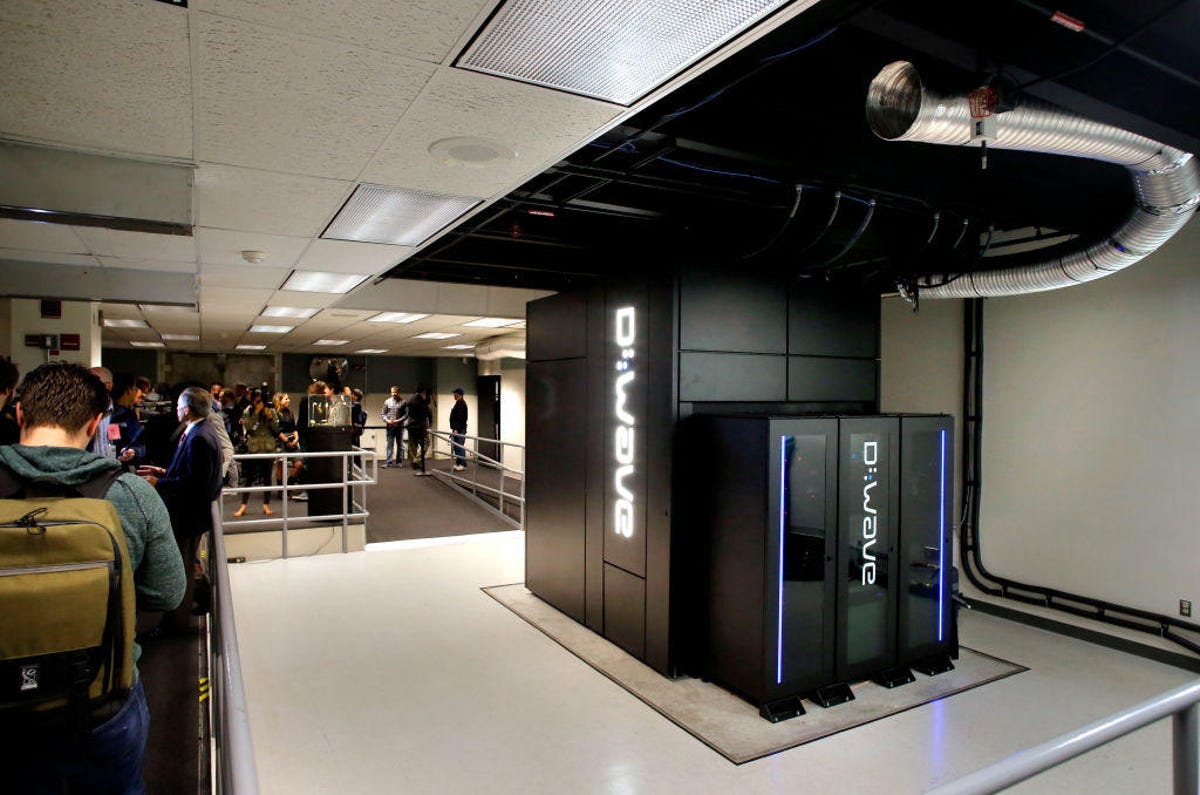
There continues to be considerable debate in academic circles as to whether quantum annealing qualifies as quantum computing, since its ultimate objective is not so much to solve problems as to optimize or refine problem solving. While that debate goes on, one of the earliest organizations to offer any kind of functional quantum product, D-Wave Systems, offers cloud-based access to its annealing systems, by way of Leap (whose premium service tier is called Leap2).
Although annealing is only suited to modeling certain classes of problems, it’s arguably well-suited. Rather than modeling an algorithm as a kind of circuit, as with conventional QC, annealing adopts a probabilistic model. In one sense, this model resembles the weights and biases applied to a neural network.
The trick for the developer is being able to rephrase the mathematical function in question in the form of an “energy model.” Since qubits in quantum superposition (in-between 0 and 1) tend to seek a low-energy state, an energy model can leverage this fact of physics by building a kind of subatomic Plinko machine for solutions to fall into. Here, more probable results dig deeper pits for qubits to fall into, while less probable ones leave shallower pits. If you can accept the results of your operation as probabilities rather than facts, this method could yield more reliable probabilistic estimates. It’s actually the same leap of faith, if you will, that researchers in neural computing science have made, and their investments have paid off handsomely.
So what really are Leap and Leap2 for? If you’re a statistical researcher or mathematician, and you believe that algorithms are the most reliable ways to attain reliable probability measures, then there’s a very good argument that annealing can yield the most reliable estimates possible of uncertainty levels. There’s little plus-or-minus factor; you know how uncertain you are, and that can be a benefit.
LEAP / LEAP2 AT A GLANCE
Intended market: Small businesses and institutions seeking to build the first live, working models of real-world problem-solving using any kind of quantum technology
Class of service: Statistical analysis
Affordability: This depends on how good a quantum developer you are. D-Wave charges per minute, for the duration of the annealing process — not for data storage or transfer, but for how long D-Wave has to turn the crank. If you’re an amateur developer, you could be wasting “shots,” or production cycles, but if you know what you’re doing, your payoff may come in the form of efficiency. (Leap is also available through Amazon Braket.)
View Now at D-WAVE
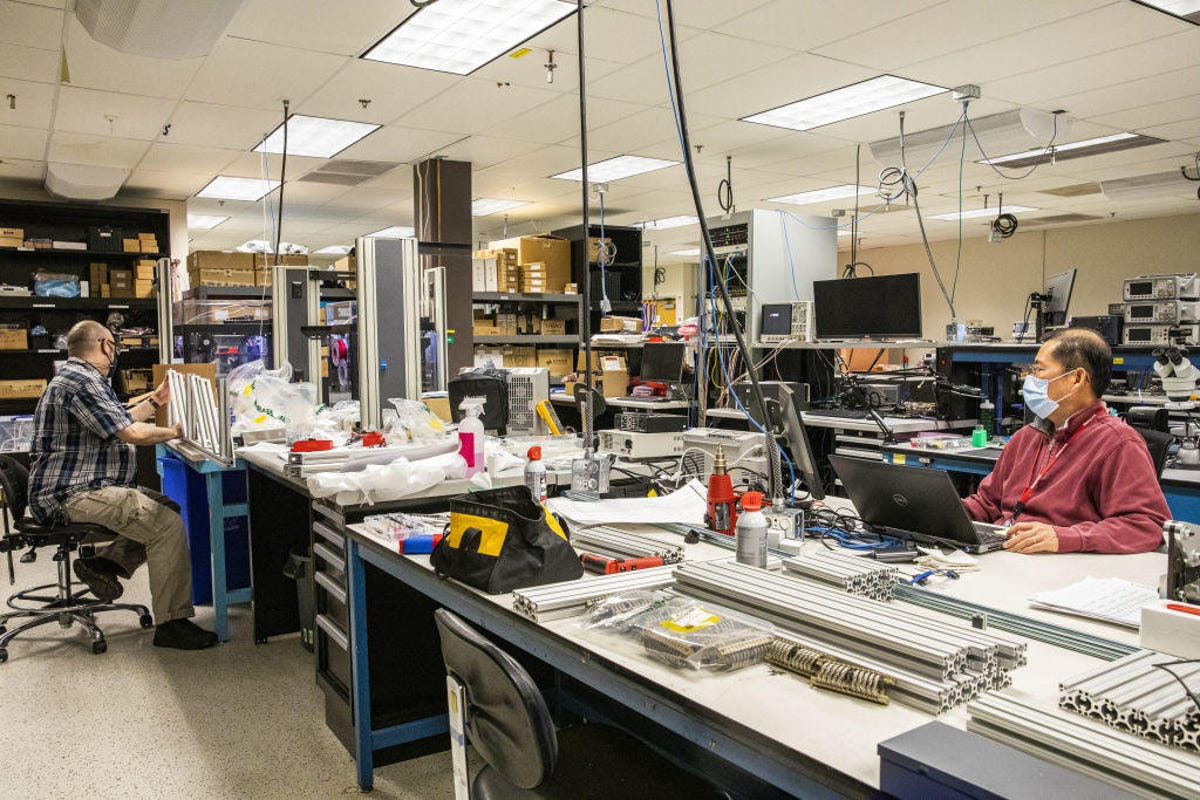
Until there is an official scorekeeper for this industry, Honeywell Quantum Solutions may have to be taken at its word that its trapped-ion qubit fabrication method enables up to 64 qubits to become entangled. Think of each qubit as a memory component. The number of possible superposition states for each entangled qubit (analogous to the length of a byte in binary computing) grows to 2, raised to the power of the number of qubits. So 64 is a much bigger stretch from 63 than 63 was from 62.
Honeywell’s primary interest in QC is to eventually sell commercial hardware, but in the meantime, sell commercial quantum services. Up until recently, its primary means of building a customer base had been direct collaboration — getting academia involved in the design process. In October 2020, the company took its outreach program one step further, by selling time on one of its H0 or H1 models, for a presumably nominal fee. It’s very transparent about its motives: It’s seeking greater involvement by potential customers, as a way of inspiring its own engineers to make process improvements for its forthcoming H2 model.
So this isn’t exactly a serve-yourself, self-provisioning, cloud-like service: With Honeywell, the idea is that you’re entering into a professional, customer relationship with the manufacturer, perhaps with the idea of giving its machines a test-drive.
H0 / H1 SERVICE AT A GLANCE
Intended market: Prospective customers of Honeywell quantum systems
Class of service: Performance testing — essentially, taking the latest models out for a spin
Affordability: As with the first cloud services in the 2000s, your final price will be a matter of negotiation. For scheduling time on H0, the price you’ll pay is based on Honeywell’s determination of the size of the job you intend to run. That size is measured in “credits,” and you purchase credits in advance in increments of 1,000. For H1, there are flat monthly subscription fees, which Honeywell will set based on how you intend to use it, and how much time that intended use case may consume.
View Now at Honeywell
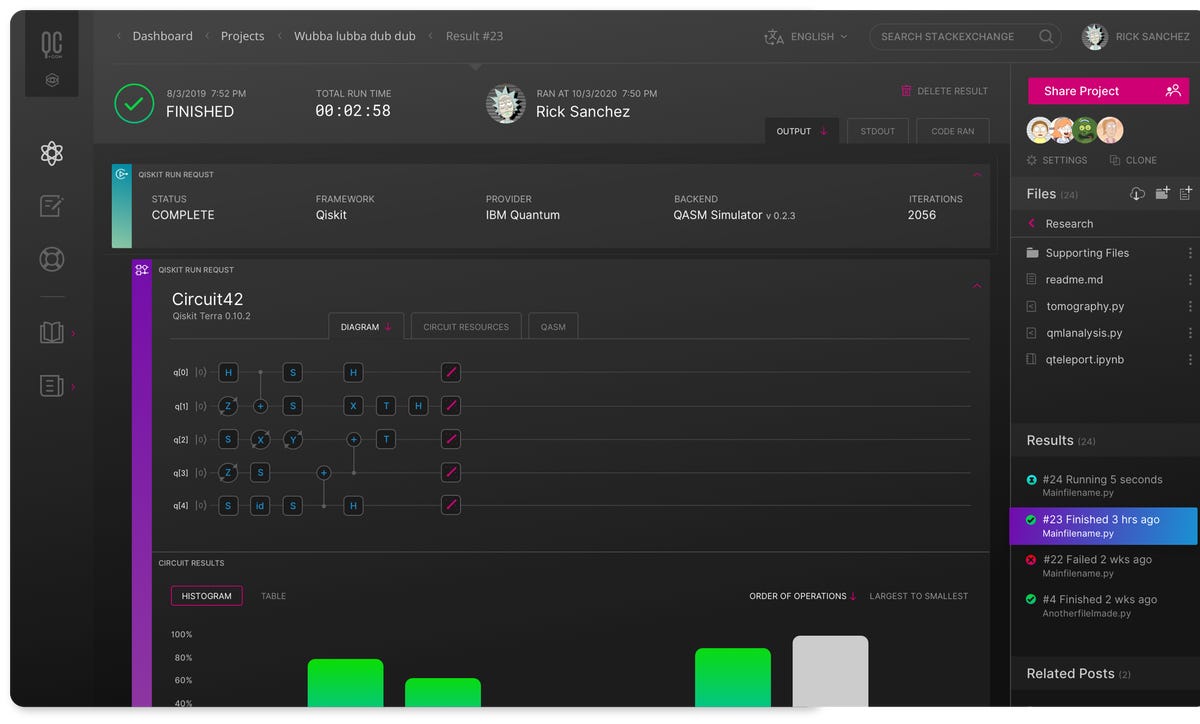
Essentially, Strangeworks has built a collaboration platform for quantum researchers, encouraging them to come together and share their work with each other — and the emerging community — under an open source license. The platform was launched with a QC simulator only, though its executives have plans to facilitate direct access to a working QC facility. In the meantime, the platform serves as a marketplace where participants may serve as vendors.
The effort stemmed from founder William “Whurley” Hurley’s work as chair of the IEEE’s Quantum Computing Working Group. As his day job, Hurley built applications platforms either for, or to be acquired by, major enterprises. For instance, in 2014, Hurley built an investment advice expert system called Honest Dollar, which was acquired two years later by investment firm Goldman Sachs. Experiences such as this informed Hurley that scientific computing entrepreneurs need exposure to investment capital first and foremost. His objective for Strangeworks has been to bring together the class of people he’s worked with at IEEE, and make their services and expertise accessible to potential benefactors, thus germinating the kind of ecosystem that QC has yet to attain under its own power.
QUANTUMCOMPUTING.COM AT A GLANCE
Intended market: Practitioners or prospective participants in the quantum computing research field — people who expect to be in the industry, as opposed to its customers
Class of service: Experimental, and to the extent feasible, even recreational QC research
Affordability: Strangeworks QC is a free tier available to individual researchers, though with a 100 MB storage limit (thankfully, quantum circuit project files can be quite small) and no access to collaboration tools. These restrictions are lifted for the Strangeworks EQ “enterprise” tier, whose fees are negotiable. Some institutions may be skeptical about paying a platform to release its work as open source.
View Now at Strangeworks
[ad_2]
Source link